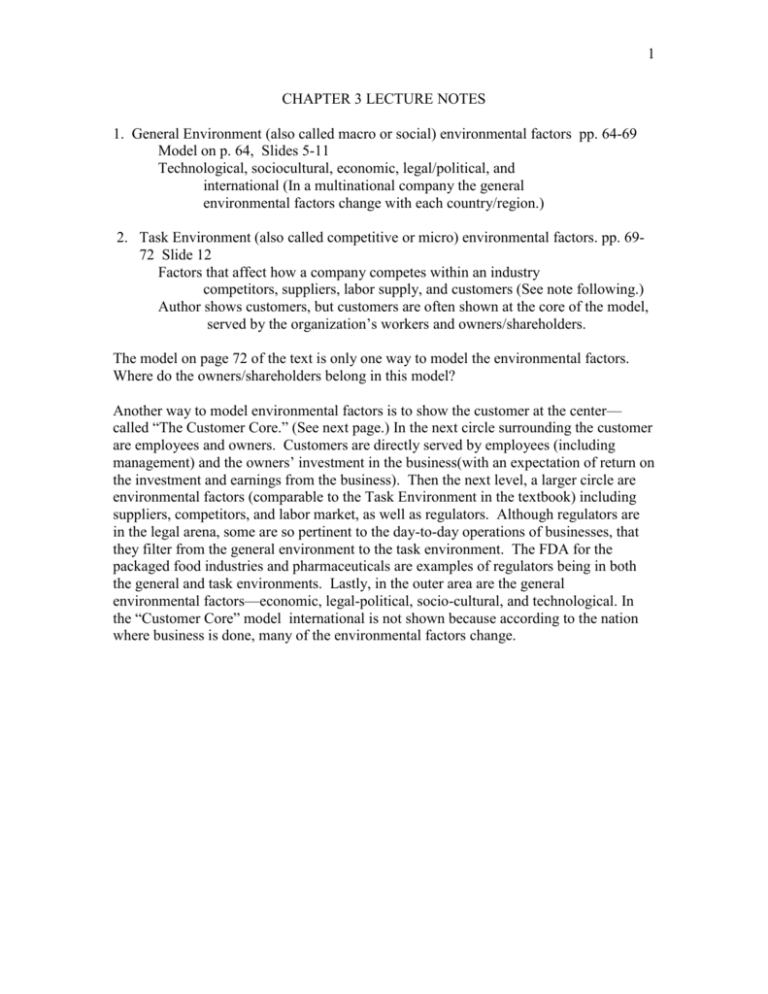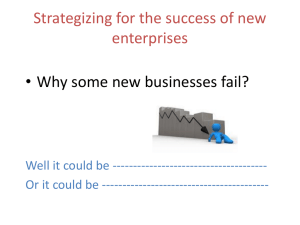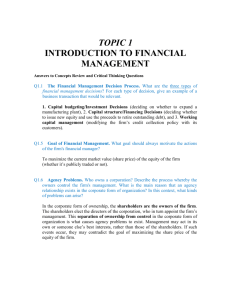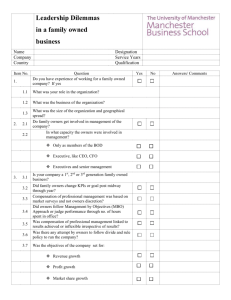CHAPTER 3 LECTURE NOTES
advertisement

1 CHAPTER 3 LECTURE NOTES 1. General Environment (also called macro or social) environmental factors pp. 64-69 Model on p. 64, Slides 5-11 Technological, sociocultural, economic, legal/political, and international (In a multinational company the general environmental factors change with each country/region.) 2. Task Environment (also called competitive or micro) environmental factors. pp. 6972 Slide 12 Factors that affect how a company competes within an industry competitors, suppliers, labor supply, and customers (See note following.) Author shows customers, but customers are often shown at the core of the model, served by the organization’s workers and owners/shareholders. The model on page 72 of the text is only one way to model the environmental factors. Where do the owners/shareholders belong in this model? Another way to model environmental factors is to show the customer at the center— called “The Customer Core.” (See next page.) In the next circle surrounding the customer are employees and owners. Customers are directly served by employees (including management) and the owners’ investment in the business(with an expectation of return on the investment and earnings from the business). Then the next level, a larger circle are environmental factors (comparable to the Task Environment in the textbook) including suppliers, competitors, and labor market, as well as regulators. Although regulators are in the legal arena, some are so pertinent to the day-to-day operations of businesses, that they filter from the general environment to the task environment. The FDA for the packaged food industries and pharmaceuticals are examples of regulators being in both the general and task environments. Lastly, in the outer area are the general environmental factors—economic, legal-political, socio-cultural, and technological. In the “Customer Core” model international is not shown because according to the nation where business is done, many of the environmental factors change. 2 CUSTOMER CORE GENERAL ENVIRONMENT ECONOMIC LEGAL-POLITICAL SOCIAL-CULTURAL TECHNOLOGICAL EMPLOYEES AND OWNERS TASK ENV. SUPPLIERS, COMPETITORS LABOR MKT. REGULATORS GENERAL ENVIRONMENT ECONOMIC LEGAL-POLITICAL SOCIAL-CULTURAL TECHNOLOGICAL 3. The importance of the external environment on organizations and environmental Forces pp. 72-85, model p. 72 Slides 13-15. Uncertainty in the environment (general and task) is determined by the number of factors in the organization’s environment and the rate of change in these factors. Many industries are in more dynamic environments, and flexibility is critical. 4. The internal environment and Organizational/Corporate Culture pp. 75-85 Slides 17 24 Some cultural factors are visible, others are invisible (p. 76) The culture of an organization is shaped through stories, symbols, heroes, slogans, and ceremonies. These evolve to form the attitudes, opinions, beliefs, and values in an organization. Culture is the “personality” of an organization—what it is like to work and do business there. Deal and Kennedy (ref. #58 in chapter, but not explained) classifies cultures as Win-Win--Individual Performance (sales organizations for example), You Bet Your Company (GE and others with long-term, high capital investment projects), Work-Hard, Play-Hard (Xerox and most sales organizations), and Process cultures (bureaucracies--government). Other classifications on page 79 include the following: Adaptability, Achievement, Involvement, and Consistency







